When did 7up come out? 7up originated when Charles Leiper Grigg invented the carbonated drink in 1929 while working in St. Louis, Missouri. It's original name was "Bib-Label Lithiated Lemon-Lime Soda,” which - like a gulp of 7up - is a mouthful. “Lithiated” refers to lithium citrate, one of the original ingredients which is a mood enhancer used in the psychiatric treatment of manic states and bipolar disorder. 7up iconography is nestled in American history between Chef Boyardee (1928) and Twinkies (1930). Let’s get to some history!
LOG CABIN TO BIG CITY
Charles Leiper Grigg was born in a log cabin on May 11, 1868, in Prices Branch, Missouri. He started working in a general store in Bellflower, Missouri. He made the move to the big city when, as a grocer, he wrote to a company about their poor business practices, and the company offered him a position to help them improve.
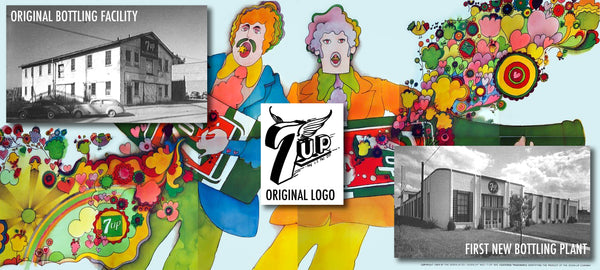
Charles met Vess (Sylvester) Jones from Texas, who had recently made the move to diversify away from his profitable clothing company due to the ongoing ILGWU strike. By 1912 Jones was already heavily invested in his syrup/soda venture, and hired Grigg as an executive advertiser. Learning his way around the company, Charles ended up in product development, creating Orange Whistle in 1919.
MIDCENTURY STREAMLINE
CITRUS WARS
Vess Jones and Orange Whistle were a success for decades, Grigg found himself at odds with the brand and its erratic owner. He left Whistle and went to work with Warner Jenkinson Co., a supplier of food dyes and flavorings. While working at Warner, Grigg formulated a different orange drink he called Howdy. A chance meeting at the City Club of St. Louis put coal merchant Edmund Ridgway and Charles Grigg in front of each other. The new partners established the Howdy Company to produced a rival orange drink, but it wasn’t successful. Orange Crush was, well, ‘crushing’ the competition because it was made with real orange juice, and much of the competition, including Howdy, only used orange oils extracted from the peels.
A determined Grigg set out for a lemon-lime soda instead. After 12 recipes, Grigg settled on one, and called it "Bib-Label Lithiated Lemon-Lime Soda,” and bottled it in 7-ounce bottles. Determined to put a smile on people’s faces one way or another, Grigg included lithium citrate in the recipe; a mood enhancer used for bipolar disorder. Two weeks after Charles Grigg and Edmund Ridges of the Howdy Company introduced "Bib-Label Lithiated Lemon-Lime Soda" to the world, the stock market crashed in what was known as "Black Tuesday."
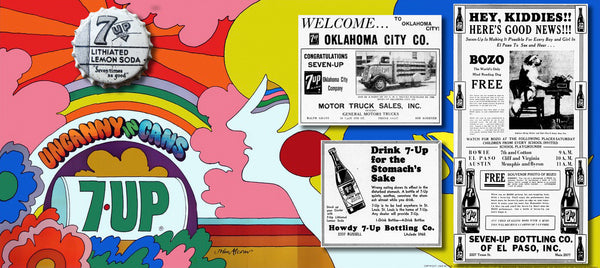
Considering the overlap of The Great Depression (1929–1939), Prohibition (1920-1933), and the Dust Bowl (1930-1936), who knows how many lives 7up saved while also being well-received in the world of legal and illegal alcoholic cocktail mixing. Grigg quickly changed the name the drink to 7up, but it wasn't until 1936 when Howdy Company changed its name to 7up Bottling Company.
HERE IS THE TABLE
HERE IS THE CHAIR
ABOUT THAT NAME
How Grigg formulated the shorten name was taken to his grave when he passed in 1940. Here are the current theories, and you, dear reader, can pick your favorite.
- There were seven ingredients in the original formula in the uplifting drink. (Some might say there were 8 ingredients corresponding with the 8 bubbles used on the label until the 1940s when lithium citrate was banned in soft drink and beer, and the formula was changed. After 1940s, there are 7 bubbles on the label, as well as an established “7 ingredients” to the formula)
- The drink was originally bottled in 7 ounce bottles, so 7up evolved as an offshoot of “bottoms up”
- The 7-pointed star or heptagram is used in traditional Catholicism to ward off evil spirits and emotions; (We should note Griggs was Methodist)
- From gambling games like Craps and poker where lucky 7s or the 7th card up saves the round… or more likely the popular Seven-Up card game
- Grigg had an affinity for cattle brands; (The original logo with wings is a little detailed for this theory)
- “Bib-Label Lithiated” is 7 syllables, and the lemon-lime is the “up”
- Seven-Up Pete (Peter McMahon), a hunchback Irishman who was one of the first to discover gold in Silver Bow Creek, Montana; (There was also a dude ranch named after him)
- The atomic mass of Lithium is 6.941 u or “7 u”
SEARCH OUR SODA SIGNS
MARKETING MAGIC
7up was bought by Western Electric in 1969. Before entering into a string of corporate manhandling once purchased by Phillip Morris in 1978, 7up was responsible for some of the most pivotal advertising in American history. The “Uncola” marketing campaign was humorous and remarkably effective. Using works by Peter Max, John Alcorn, and Kim Whitesides for a psychedelic series was brazen, risky, and remains unmatched when it comes to large brands following the lead of artists and counter culture voices. For example (and prepare yourself):
After the brands acquisition into the world of conglomerates, we get 7up special edition Ford Mustangs for a failed promotion and “Make 7 Up Yours” t-shirts. Not quite the same champion of the counter-culture collective, but still collectable in the vintage 7up world. As of now 7up brand and formula is owned by Keurig Dr Pepper (formerly Dr Pepper Snapple Group) and is distributed worldwide by PepsiCo.
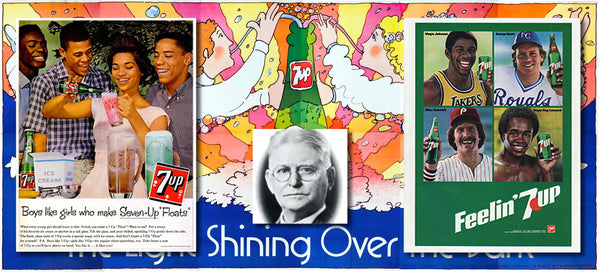
A general timeline of vintage 7up logos can be found at Hatchwise Learning Center HERE.
Email Subscribers: Use code TY99 for 20% off this weeks select items.
Print Magazine has one of the most extensive collections of vintage 7up branding, and the detail of the 7up brand is impeccable. You can check that out HERE.
VINTAGE 7UP REMINDERS
When coming across vintage 7up advertising, remember the key points in this blog:
- Howdy Company changed its name to 7up Bottling company in 1936
- The label changed from 8 bubbles to 7 bubbles in the late 1940s
- The ingredients of 7up changed in 1948
- The original bottles were 7oz
RECIPES?
The red spot added to the logo in 1966 has a name, “Cool Spot,” and has 4 video games developed by Virgin Interactive in the 1990s (ask your parents). And if that wasn’t enough weirdness for you, dear reader, here’s a 1948 recipe for Baked Fish with Seabreeze Dressing featuring Lithiated Lemon-Lime Soda. If slipping 2 bottles of lithium-laced goodness to your family seems odd, remember this at this time in America, amphetamines were sold over the counter.
For our modern age, 7up also has some pretty enticing food recipes on their site you can check out HERE... to which Cookpad said "hold my Lithiated Lemon-Lime carbonated beverage," which you can check out HERE.




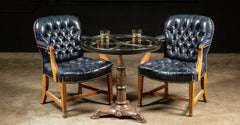

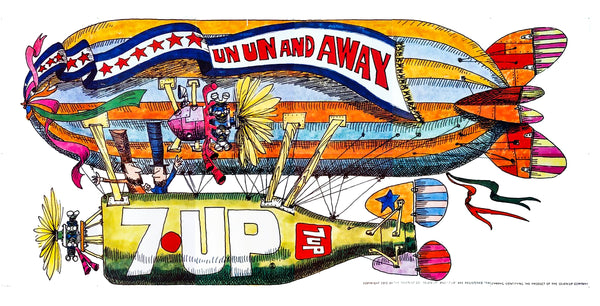





Leave a comment